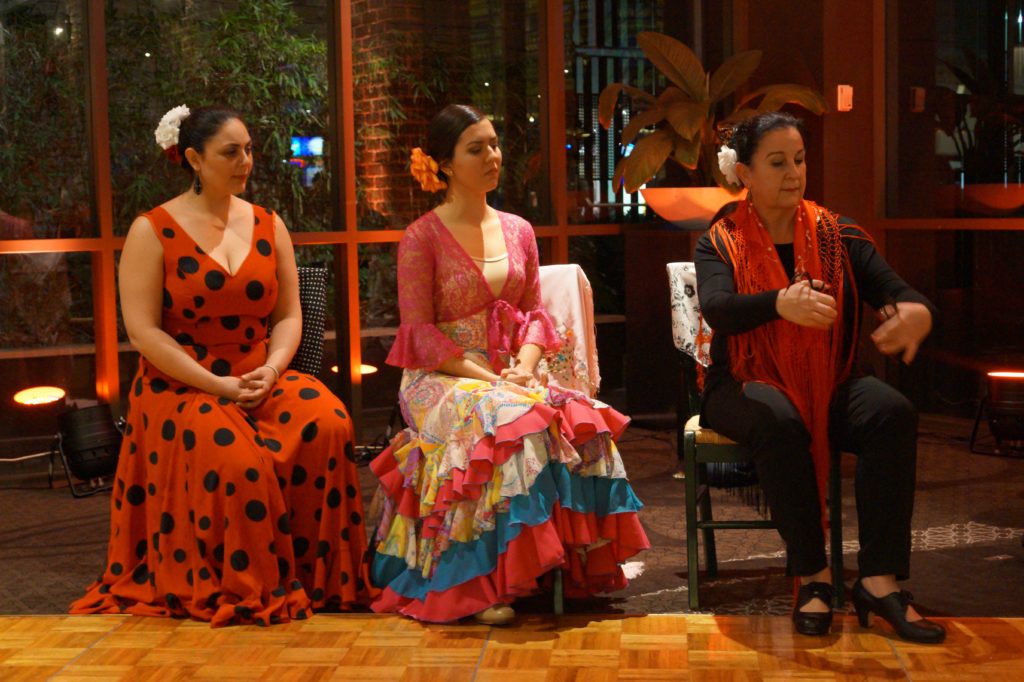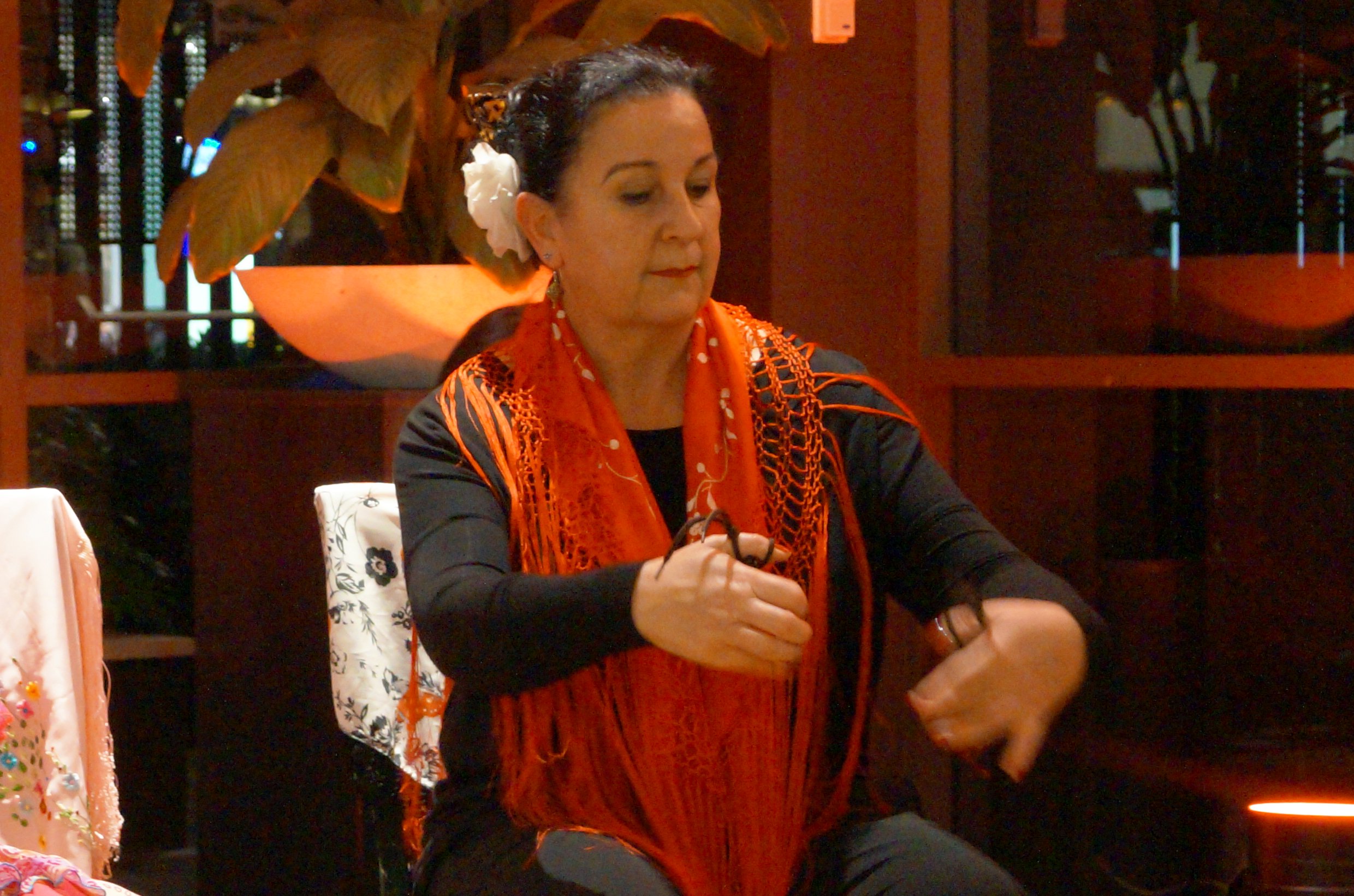1. What is Flamenco dancing?
Flamenco Dancing is an art form expressed through dance to try to express life’s experiences and deepest emotions by using body movements and facial expressions complimented by a number of years of technical training.
2. What inspired you to dance Flamenco?
Initially it was Antonio Vargas at The Mill at Newtown – I attended one of his classes as something to do and the flamenco germ set in for life. Since then I have had many inspirational teachers in Spain studying with Juana Amaya, Marolo Marin, La Tati, Paloma Gomez, Domingo Ortega, Carmela Greco and Antonio Canales.
3. When and where did you learn how to dance Flamenco?
I started in Australia attending every class I could afford with Antonio Vargas. I then moved to Greece and sought out flamenco schools where I trained as a base but constantly travelling to Spain for long stints of living and studying in Spain with master teachers at Amor de Dios in Madrid, Granada, Sevilla, Cadiz and Jerez de la Fronteria in Andalucia.

4. Where can one learn how to dance Flamenco?
At my school of course! Pasion Flamenco Dance Studio. I pride myself in preparing students with correct techniques in footwork, castanents, manton (shawl work), bata de cola, and abanico (fan) to start their flamenco journey. I use a training method called Alianza Flamenca which is a methodical way of learning flamenco techniques, gradually increasing in difficulty, length and knowledge of ‘compas’. This combined with open classes in various flamenco rhythms provides students with a solid foundation to continue in flamenco growth.
5. What made want to open up your own Flamenco dance studio?
I had just returned from living in Greece for approximately 13 years (being of Greek origin) and having lived and studied in both Greece and Spain I decided to return to my second homeland and family with new husband in toe to open my own studio and share the knowledge I had learnt through my training and flamenco company work.
6. What classes and training methods do you offer?
Pasion Flamenco Dance Studio offers classes to all ages from 6 to over 60. I am the representative in Australasia for Alianza Flamenco which is an international training method currently taught in Australia, Spain, England, Greece, Malta, Italy and Singapore. It is a structured way of learning this dance form and levels range from Para Ninos (children) up to Teacher Qualification levels. Final training would require the student to prepare their own choreographies which can only be enhanced by study in Spain with various teachers.
7. Do you provide performance opportunities for your students?
Definitely, the best form of improvement comes when dancers perform on a regular basis, putting their hard-earned skills to the test. Pasion Flamenco has a professional group of dancers that perform in venues around New South Wales. They perform at venues such as weddings, wineries, corporate functions, restaurants etc and most recently at The Lantern Club at Roselands. Pasion Flamenco also puts on a Studio Concert every two years to incorporate all students and celebrate their achievements.

8. Tell us about the costumes worn by the Flamenco dancers?
Flamenco costumes are varied in style, design and colour and can enhance the performance. There are certain dances that are more solemn and intense as they depict despair and anguish in which case darker colours might be used in the costumes – a typical dance rhythm for this darker mood would be a Siguirias (normally sung at funerals). Dancers would wear brighter colours in various styles for happier lighter dances such as Alegrias, Tangos or Sevillanas.
9. What makes you passionate about Flamenco?
The fact that while you dancing and/or performing to you express your emotions in such an exquisite and unique way. Each dancer draws from her own life’s experiences and communicates by conveying different emotions through various flamenco dance rhythms. As flamenco is so intense in technique and timing (compas) and requires instinct, emotion and experience it is also the best form of therapy and your everyday life stops for those moments when you are dancing your true self.
10. What is your favourite type of Spanish tapas?
Too many to list, but I love anything with Chorizo, prepared in any way and added to everything! A good tortilla is the best stable food with chorizo on the side of course!
11. Do you enjoy a glass or two of sangria when eating Spanish cuisine?
What a question! Of course, both white and red sangria is the perfect accompaniment to Spanish food.
12. Is there anything else you would like to share?
Flamenco is life and life is so worth enjoying and living every moment. Flamenco means different things for different people which is just the way it should be. It is one of the best hobbies, dance forms and life experience one can embrace and cradle as their own creative journey.
For more information about Pasion Flamenco Dance Studio visit www.pasionflamenco.com.au
© Lantern Club, Roselands

